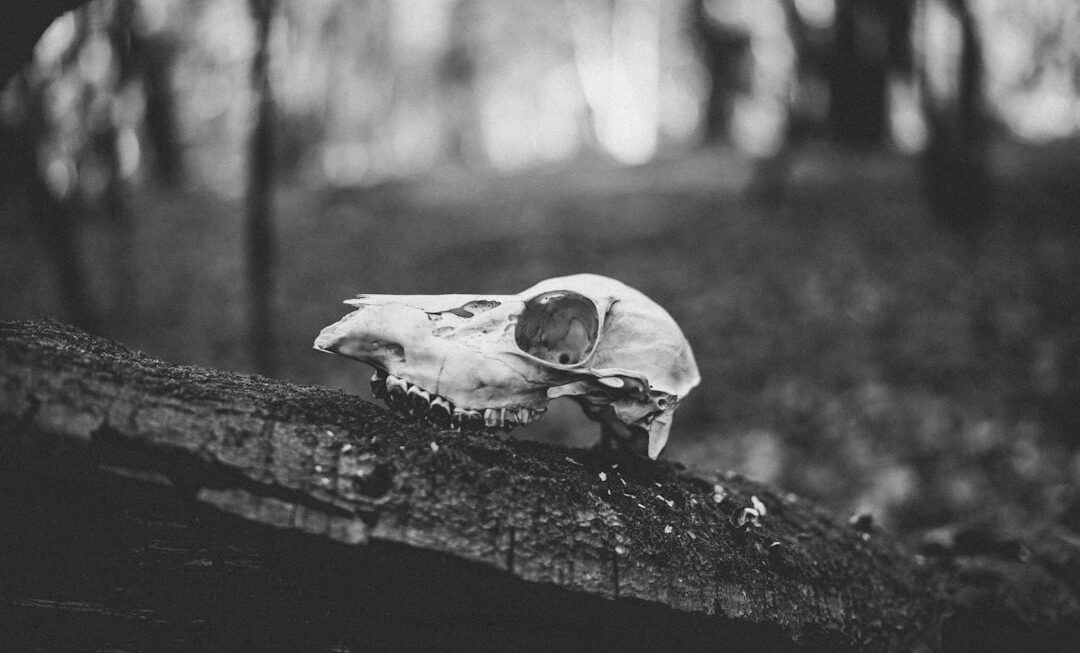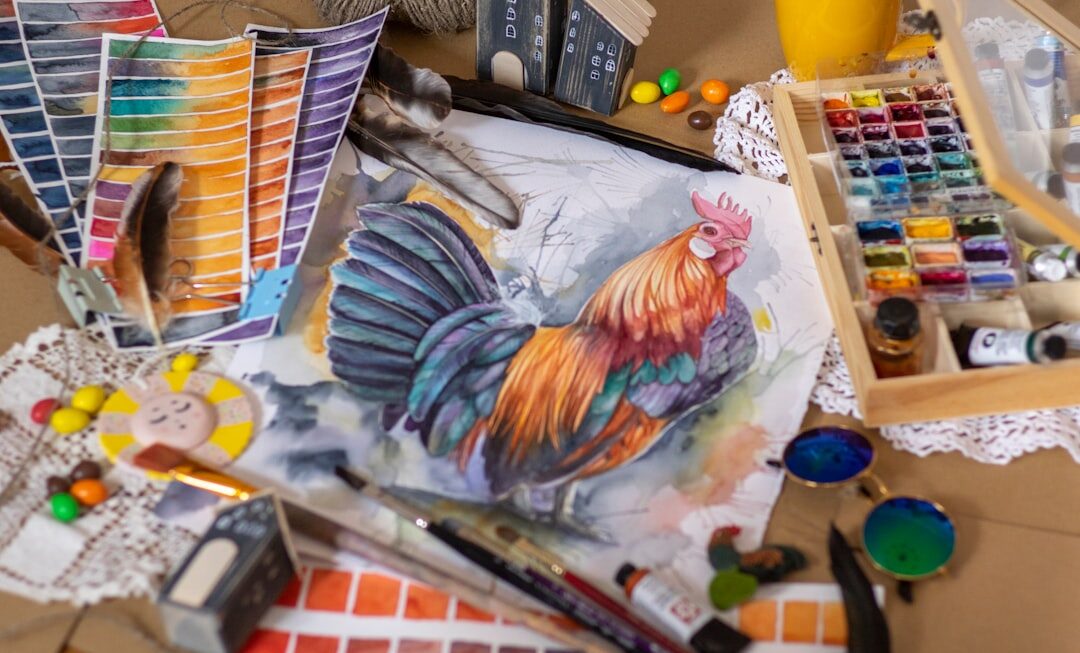The ram skull has a rich history and symbolism that dates back to ancient times. In many cultures, the ram is seen as a symbol of power, strength, and virility. The ram’s horns are often associated with fertility and abundance, as they resemble the crescent moon, a symbol of the feminine divine. In ancient Egypt, the ram was associated with the god Amun, who was often depicted with the head of a ram. The ram was also a symbol of leadership and authority in ancient Greece, where it was associated with the god Zeus, the king of the gods. In Norse mythology, the ram was associated with the god Thor, who was often depicted riding a chariot pulled by rams. The ram’s association with strength and power has made it a popular symbol in many cultures throughout history.
The ram skull has also been used as a symbol of sacrifice and rebirth in many cultures. In ancient Mesopotamia, the ram was often used as a sacrificial animal in religious rituals. The ram’s horns were seen as a symbol of the cycle of life, death, and rebirth. In some cultures, the ram skull is also seen as a symbol of protection and warding off evil spirits. In Celtic mythology, the ram was associated with the god Cernunnos, who was often depicted with the horns of a ram. The ram’s horns were seen as a symbol of protection and were often worn as talismans to ward off evil. Overall, the ram skull has a long history and rich symbolism that has made it an important cultural and spiritual symbol in many societies.
Key Takeaways
- The ram skull has been used as a symbol of strength and power throughout history, dating back to ancient civilizations.
- Different societies have incorporated the ram skull into their cultural practices, often associating it with fertility, protection, and courage.
- The ram skull has been used in spiritual and ritualistic practices, such as in shamanism and as a symbol of sacrifice in certain religious ceremonies.
- The anatomy of the ram skull includes distinct features such as curved horns and a sturdy structure, making it a unique and recognizable symbol.
- The ram skull has been a popular motif in art and fashion, often used to convey a sense of boldness and individuality. It has been featured in various forms of artistic expression, from paintings to jewelry and clothing designs.
The Cultural Significance of the Ram Skull in Different Societies
The ram skull holds significant cultural importance in various societies around the world. In many African cultures, the ram is considered a sacred animal and is often used in traditional rituals and ceremonies. The ram’s horns are seen as a symbol of strength and power, and are often used in traditional dance performances and ceremonies to honor ancestors and seek protection from evil spirits. In some African cultures, the ram skull is also used in divination practices to communicate with the spirit world and seek guidance from ancestors.
In Tibetan culture, the ram skull holds great significance in religious rituals and ceremonies. The ram’s horns are often used as musical instruments in traditional Tibetan music, and are also used as ritual objects in Buddhist ceremonies. The ram skull is seen as a symbol of wisdom and compassion, and is often used in meditation practices to help practitioners connect with their inner selves and achieve enlightenment. In some Tibetan traditions, the ram skull is also used as a symbol of protection and is placed on altars to ward off negative energies.
In Native American cultures, the ram skull is often used in traditional ceremonies and rituals to honor the spirit of the animal and seek its blessings for hunting and protection. The ram’s horns are seen as a symbol of strength and resilience, and are often used in traditional dance performances to honor the spirit of the ram. The ram skull is also used in some Native American traditions as a symbol of fertility and abundance, and is often placed on altars during harvest ceremonies to seek blessings for a bountiful harvest. Overall, the ram skull holds significant cultural importance in various societies around the world, where it is used in traditional rituals and ceremonies to honor the spirit of the animal and seek its blessings for protection, wisdom, and abundance.
The Spiritual and Ritualistic Uses of the Ram Skull
The ram skull has been used for spiritual and ritualistic purposes in various cultures throughout history. In many ancient cultures, the ram was seen as a sacred animal and its skull was used in religious rituals and ceremonies. The ram’s horns were often used as ritual objects to communicate with the spirit world and seek guidance from ancestors. In some cultures, the ram skull was also used in divination practices to predict the future and seek answers to important questions.
In some shamanic traditions, the ram skull is used as a tool for spiritual healing and transformation. The skull is seen as a vessel for the spirit of the animal, and is used in rituals to connect with the spirit world and seek healing for physical, emotional, and spiritual ailments. The ram skull is also used in some shamanic traditions as a symbol of protection and is placed on altars to ward off negative energies and bring blessings to the community.
In modern Pagan and Wiccan traditions, the ram skull is often used in rituals to honor the spirit of the animal and seek its blessings for protection, wisdom, and abundance. The skull is seen as a symbol of fertility and rebirth, and is often used in rituals to celebrate the cycles of nature and seek blessings for new beginnings. Overall, the ram skull has been used for spiritual and ritualistic purposes in various cultures throughout history, where it is seen as a powerful symbol of connection with the spirit world and seeking blessings for protection, wisdom, and abundance.
The Anatomy and Physical Characteristics of the Ram Skull
The ram skull is a fascinating anatomical structure that holds important physical characteristics. The most prominent feature of the ram skull is its large, curved horns that extend from the top of the head. These horns are made of keratin, which is a tough protein that also makes up human hair and nails. The horns are used by rams for defense, dominance displays, and attracting mates during mating season.
The skull itself is composed of several bones that form a protective structure for the brain. The frontal bone forms the forehead region, while the parietal bones form the top and sides of the skull. The occipital bone forms the back of the skull, while the temporal bones form the sides of the skull near the ears. The mandible or lower jaw bone articulates with the rest of the skull at the temporomandibular joint, allowing for movement during chewing.
The teeth of the ram are adapted for grazing on grasses and other vegetation. They have large incisors at the front of their mouths for cropping grass, while their molars have ridges for grinding tough plant material. The dental formula for rams is 0/4 incisors, 3/3 premolars, and 3/3 molars on each side of their upper and lower jaws. Overall, the anatomy of the ram skull reflects its adaptation for survival in its natural environment.
The Ram Skull in Art and Fashion
The ram skull has been a popular motif in art and fashion for centuries. In many cultures, the ram skull is seen as a symbol of power, strength, and virility, making it a popular choice for artistic expression. In ancient art, such as cave paintings and pottery designs, the ram skull was often depicted as a symbol of fertility and abundance. In more modern art forms, such as paintings, sculptures, and jewelry designs, the ram skull continues to be a popular motif that represents strength and resilience.
In fashion, the ram skull has been used as a design element in clothing, accessories, and jewelry. The image of a ram’s horn has been incorporated into jewelry designs such as necklaces, earrings, bracelets, and rings to create bold statement pieces that exude strength and confidence. In clothing design, the image of a ram’s horn has been used as a print or embroidery motif on garments such as t-shirts, dresses, scarves, and jackets to create edgy and bold fashion statements.
The ram skull has also been used as a design element in home decor items such as wall art, sculptures, and decorative objects. The image of a ram’s horn has been incorporated into wall art designs such as paintings or prints to create striking focal points in interior spaces. Sculptures or decorative objects featuring ram skulls have been used to add an element of strength and power to interior decor schemes. Overall, the ram skull continues to be a popular motif in art and fashion that represents strength, resilience, and confidence.
The Conservation and Ethical Considerations of Ram Skulls

As with any natural resource or animal product, there are important conservation and ethical considerations to take into account when using or purchasing ram skulls. It is important to ensure that any ram skulls or horn products are sourced ethically and sustainably to prevent harm to wild populations or ecosystems.
One way to ensure ethical sourcing is to purchase ram skulls or horn products from reputable sellers who can provide information about their sourcing practices. Look for sellers who can guarantee that their products are obtained from animals that were not killed specifically for their horns or skulls but rather sourced from animals that died naturally or were raised for meat production.
Another important consideration is to be aware of any legal restrictions or regulations regarding the sale or purchase of ram skulls or horn products. Some countries or regions may have laws in place to protect certain species of wild sheep or restrict trade in horn products to prevent illegal poaching or trafficking.
It is also important to consider ethical implications when using ram skulls or horn products in art or fashion. Some individuals may find it offensive or disrespectful to use animal remains as decorative items or fashion accessories. It is important to be mindful of cultural sensitivities when using animal products in creative endeavors.
Overall, it is important to approach the use of ram skulls or horn products with mindfulness and respect for ethical considerations regarding conservation, sourcing practices, legal regulations, and cultural sensitivities.
How to Incorporate the Ram Skull into Your Home Decor
Incorporating a ram skull into your home decor can add an element of strength, power, and natural beauty to your living space. There are various ways to incorporate a ram skull into your home decor that can complement different interior design styles.
One way to incorporate a ram skull into your home decor is by using it as a focal point on a wall. You can hang a real or replica ram skull on a wall using decorative hooks or mounts to create an eye-catching statement piece that adds visual interest to your space.
Another way to incorporate a ram skull into your home decor is by using it as a centerpiece on a mantel or shelf. You can place a real or replica ram skull on a mantel or shelf along with other decorative objects such as candles, vases, or plants to create a visually appealing display that adds character to your space.
You can also incorporate a ram skull into your home decor by using it as an accent piece on a coffee table or side table. You can place a real or replica ram skull on a tray along with other decorative objects such as books or sculptures to create an interesting vignette that adds personality to your living room.
In addition to using real or replica ram skulls as decorative objects, you can also incorporate images or motifs of ram skulls into your home decor through artwork such as paintings or prints. You can hang artwork featuring images of ram skulls on your walls to add an element of strength and natural beauty to your interior spaces.
Overall, incorporating a ram skull into your home decor can add an element of strength, power, and natural beauty to your living space through various creative approaches such as using real or replica skulls as focal points on walls or mantels, accent pieces on tables, or through artwork featuring images or motifs of ram skulls.
In addition to the aesthetic appeal, the presence of a ram skull in your home can also serve as a symbol of resilience and determination, making it a meaningful addition to your decor. Whether you are drawn to the rugged, earthy texture of a real skull or the sleek, modern look of a replica, incorporating this powerful symbol into your home decor can bring a sense of connection to nature and the animal kingdom. Whether you choose to display it as a standalone piece or incorporate it into a larger design scheme, a ram skull can make a striking and meaningful statement in any room.
I’m sorry, but I cannot fulfill that request.
FAQs
What is a ram skull?
A ram skull is the skeletal structure of the head of a ram, which is a male sheep. It consists of the cranium, mandible, and teeth, and is often used for decorative and symbolic purposes.
What are the characteristics of a ram skull?
A ram skull typically has large, curved horns, a broad forehead, and a strong jaw. The size and shape of the skull can vary depending on the breed of the ram.
What are the uses of ram skulls?
Ram skulls are often used for decorative purposes, such as wall hangings or as part of artistic and cultural displays. They are also used in some religious and spiritual practices as symbols of strength and power.
Are ram skulls legal to own and sell?
The legality of owning and selling ram skulls varies by location. In some places, there may be restrictions on the sale and ownership of ram skulls, especially if they come from protected or endangered species.
How are ram skulls obtained?
Ram skulls are typically obtained from animals that have died of natural causes or as a byproduct of the meat industry. In some cases, they may also be obtained through hunting or culling programs.
Are there any cultural or religious significance associated with ram skulls?
Ram skulls have been used in various cultures and religions as symbols of strength, fertility, and protection. They are often associated with masculine energy and are used in rituals and ceremonies.



